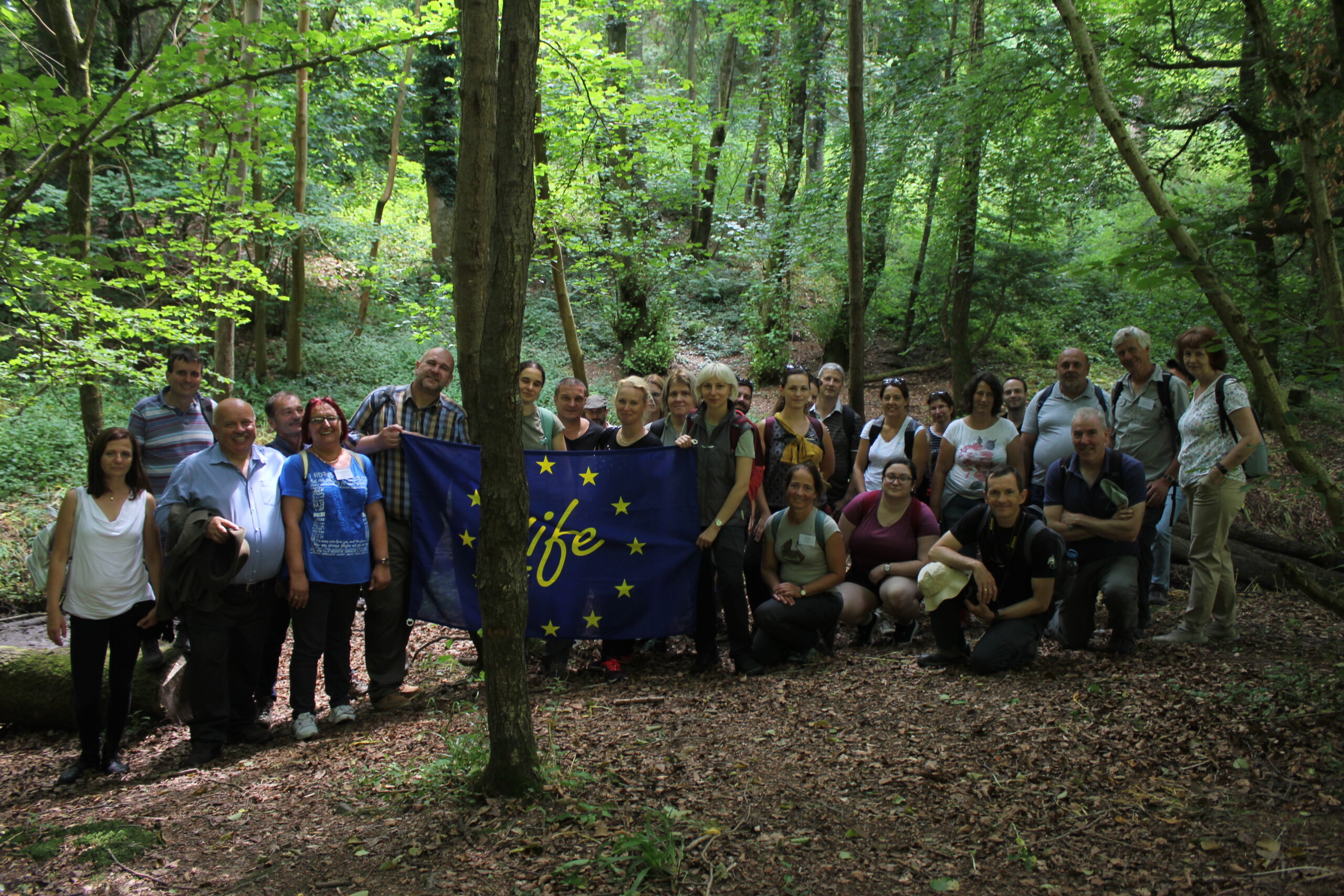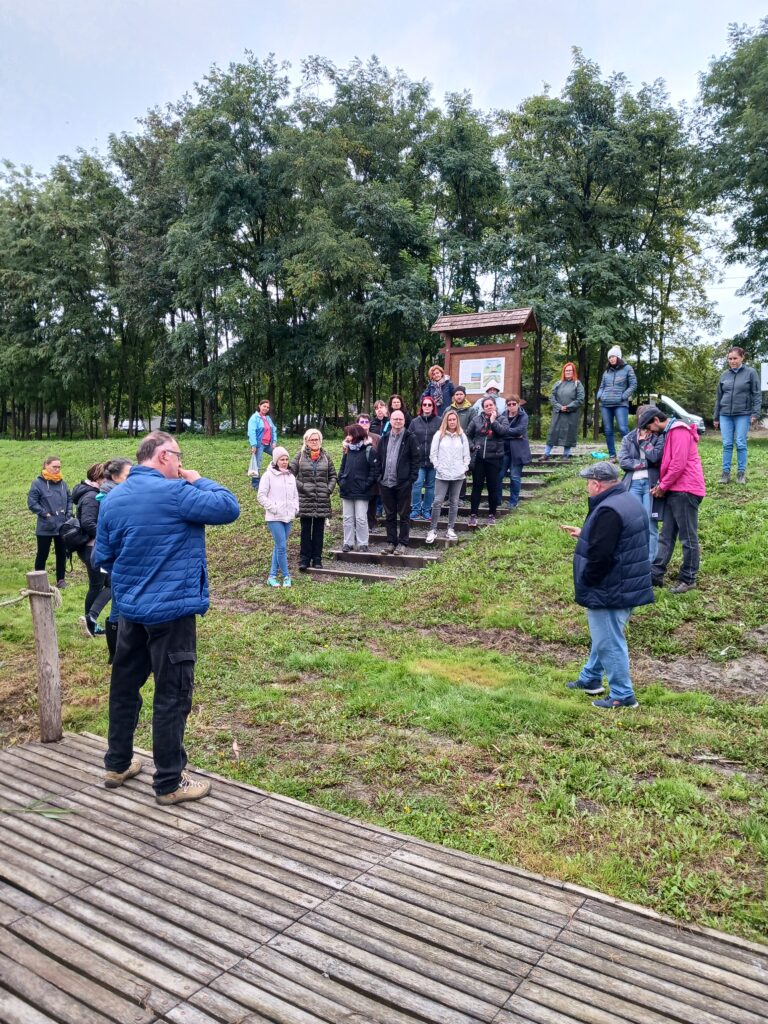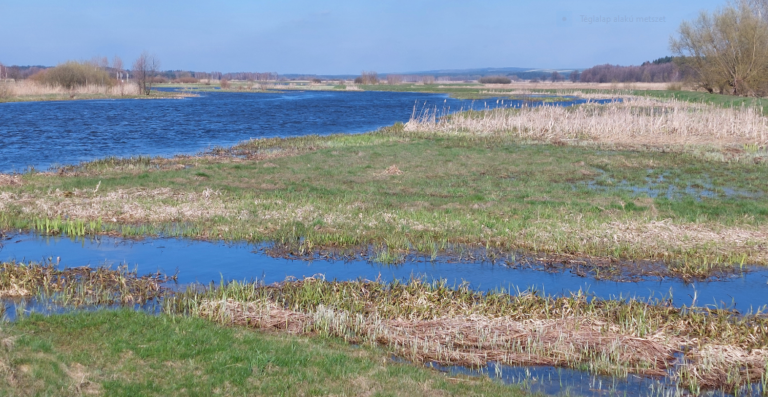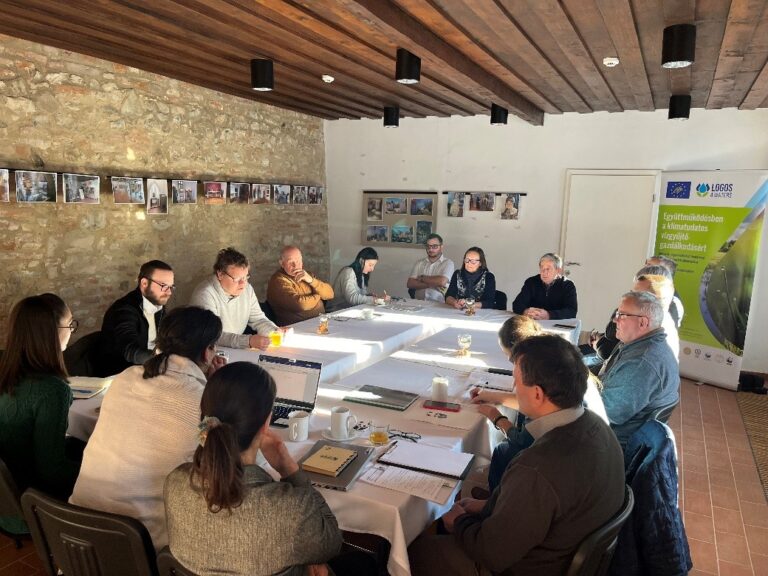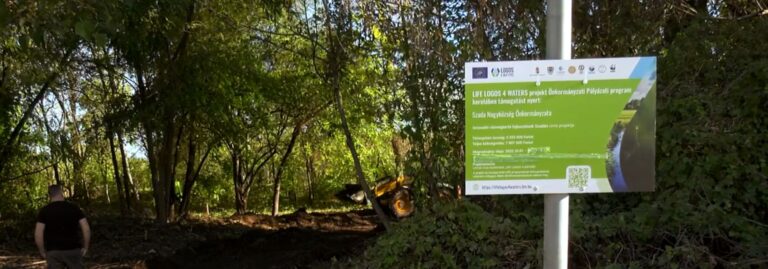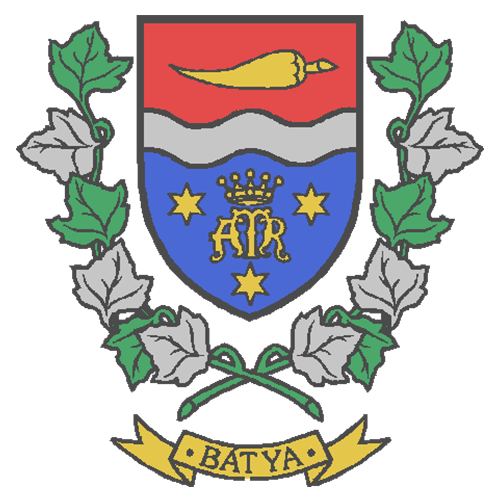The beginning of the Stroud Valley Rural Sustainable Drainage Programme
On the study trip within the framework of the LIFE LOGOS 4 WATERS project, local authorities and professional organisations visited to Stroud in the west of England. The methods of preventing flooding in streams used there is barely known in Hungary.
The Stroud district, with a population of 120,000, is a hilly, fairy tale landscape, part of the Costwolds Area of Outstanding Natural Beauty. People living in the town and surrounding villages are often threatened by the fast-flowing ‘flash floods’ of the River Frome and its tributaries. Between 1875 and 2012 10 major flood events were recorded, which flooding dozens, sometimes hundreds of homes.
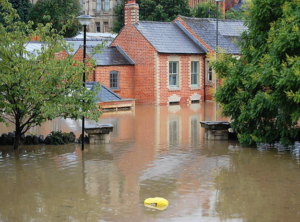
The staff of the district government (District Council) reported that after the floods in 2007, they examined the major infrastructure investments that could have been considered to protect the town, but each of them had more disadvantages than advantages. There was no place for a flood protection wall in the settlement. To build a large tidal reservoir on one of the sub-catchments particularly affected by flash flooding was not cost-effective and was rejected by local residents too. Dredging the stream bed to quickly drain the floodwaters would have not only harmed the wildlife in the stream but would have increased the flood risk for people living downstream, so it was no wonder that the proposal was met with protest. In the end all these plans were rejected. So they decided together with the population to prevent flooding where it arises, i.e. in the catchment area above the settlement.
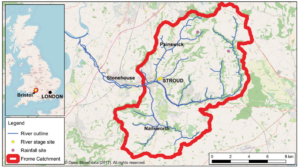
In England, local people are actively involved in solving problems that affect their community. In Stroud District, four Community Flood Action Groups have been organised and the District Council has been able to start a flood management programme based on naturally slowing down the run-off and water retention which is much cheaper and more beneficial to all than any other opportunity. In 2014, the District Council contracted a “Nature-Based Flood Management” referent, who started implementing the program. He is Chris Uttley, who still holds this position to this day and guided us during our study trip.
Our visit and experiences
During our visit, led by Chris, representatives of Stroud District Council, various government bodies, conservation civil groups, landowners and affected local residents presented what their roles had been in the program. It was inspiring to see how the different organisations and groups come together to support each other and evaluate their successes together.
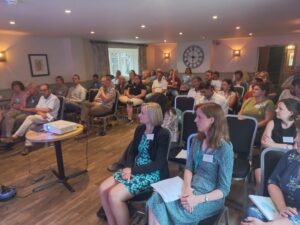
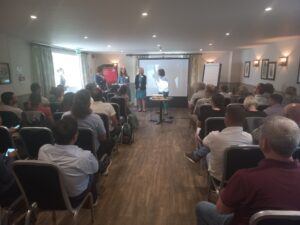
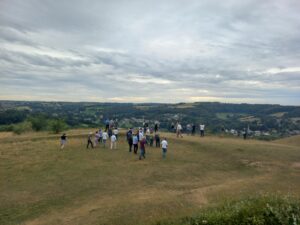
Professional meeting – Stroud (© Tóth Edit)
A short film about the principles and methods of cooperation can be viewed with Hungarian subtitles on WWF Hungary’s Youtube channel:
https://www.youtube.com/watch?v=bUBv8LJ6Wog
The point of the Stroud Rural Sustainable Drainage (RSuDS) project, as we have learnt, has altered the run-off conditions in the upper catchment of a flood-prone river by small-scale, landscape-scale modifications so that a much smaller proportion of the water reaches the stream beds much more slowly, thereby avoiding dangerous flood peaks during a heavy rainfall. The programme has specifically built on cooperation with local land users and landowners. The work started with the referent visiting the area, exploring intervention points for water retention and meeting the landowners in person. From the start, they tried to focus on low-risk, easy-to-implement sites, which helped build trust.
Most of the interventions were on farmers’ private or rented lands and are adapted as much as possible to their farming practices. As no harm was caused to land users, no compensation or financial incentives were needed to convince them. The intervention points had been selected and proposed by the farmers themselves, who also participated in the implementation. In any case, the works and constructions are definitely carried out locally: if not carried out by the farmer, then they based on the capacities of local contractors and volunteer groups. Thanks to this approach, costs were not prohibitive, with some installations costing as little as £80-100, others a few hundred or a few thousand pounds sterling. It is typical that consultations take more time and money than the implementation of hundreds of small interventions. Their philosophy is that nature-based flood management is not a one-off project, but a land management method. During our visit, they also emphasized that one of the essential principles of natural flood management is to take many small steps, which cumulative effect adds up to reduce flood risk, rather than a few large ones. This method is suitable for managing small, recurring floods.
In recent years, led by the referent, more than 750 small-scale nature-based water retention measures have been built in the upper watershed of the River Frome. According to preliminary results, these hundreds of local water retention interventions can reduce flood levels by up to 1 metre in key locations. Good practices of water retention measures
The short film Natural Flood Management in the Stroud Valleys shows how the interventions have carried out, also with Hungarian subtitles:
https://www.youtube.com/watch?v=HaQdWEnZOWw
On the second day, we had a look at some of the interventions hidden in the beautiful forests and fields. They are divided into completely natural, semi-natural and constructed categories.
The interventions have 3 specific goals:
- slowing down the run-off with vegetation and other obstacles,
- reducing the accumulated amount of water through infiltration into the soil and evaporation by vegetation, and finally
- temporary storage of water in order to flatten the flood peak.
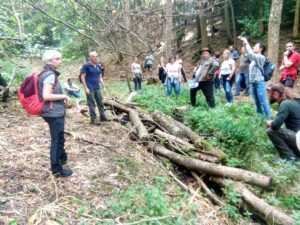
At the first site, we saw interventions that did not affect a watercourse. Between mown and grazed grassy hills, low, grassy earth banks have been built at several points, which can stop the rainfall for a few days. In addition, a narrow, steep valley was taken out of grazing so that this area could be reforested and the resulting lush vegetation could slow down and absorb rainwater that had previously been rapidly run off. A little further away, mostly diseased or fallen trees were used to block a dry gully. In this way, they can reduce erosion and slow the accumulation of water. Where a barrier was placed in a stream bed, care was taken to ensure that the stream could flow freely under the logs at low water, but that it would backflow and discharge water from the bed into the forest or mowing field at high water. The logs are often held up by their own weight alone, while at other times they are fixed with 1.2 metre long steel piles.
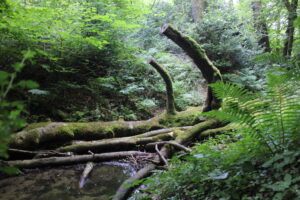
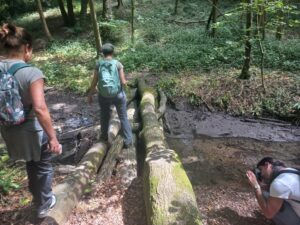
A natural large woody debris barrier (© Viktor Mátyás Farkas) and a fixed leaky woody dam (© Edit Tóth)
At another site, a previously created deep, straight ditch was completely buried in a section of a few hundred metres to retain water. The periodic water flows now not in a ditch, but meanders along the flood plain in the valley, slowing down and meanwhile some of it is seeping into the ground. And near the village of Randwick, low earth embankments in a pasture are being used to retain and drain water to protect the village from flooding.
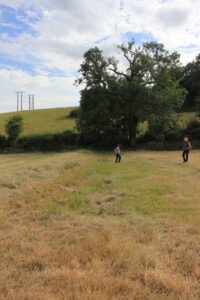
Additional benefits
In addition to increased flood safety, the most important co-benefits are related to community building and nature conservation. Earthen banks, tree branch barriers in dry gullies, and stream-side reforestation significantly reduce sediment loads to watercourses, thus improving water quality. The log dams create new micro-habitats. On the one hand, they create a variety of habitats in the hillside streams, small bogs with rapid flows and small pools behind them. On the other hand, the dead wood itself provides habitat for invertebrates, fungi, mosses and ferns, and finally, the gaps created by felled trees give the new plant species a chance to grow, increasing the richness of the vegetation.
Also important is the broad social unity that has been built up between local residents and the organisations involved in the project, which has greatly helped its implementation. During the visits, we had the opportunity to talk about this in person with the owners, tenants and farmers of the sites, who shared their experiences and future plans.
We hope that by learning and presenting good practices from abroad, we can help to strengthen cooperation between stakeholders at our country and to disseminate these natural solutions.
Representatives of the following organisations participated in the study visit:
Ministry of Agriculture State Secretariat for Forests
Lower Danube Valley Water Management Directorate
Bács-Kiskun County Government Office
Municipality of Bátya
Ministry of the Interior Coordination Office for Municipalities
Ministry of the Interior Deputy State Secretariat for Public Employment and Water
Municipality of Drágszél
Municipality of Dusnok
Municipality of Galgagyörk
Association of Climate Friendly Municipalities
Municipality of Kosd
Central Danube Valley Water Management Directorate
Hungarian University of Agricultural and Life Sciences
Hungarian Chamber of Engineers
National Association of County Municipalities
National University of Public Service, Faculty of Water Sciences
Western Balkans Green Centre Nonprofit Ltd.
National Directorate General for Water
Municipality of Penc
Pest County Government Office (Nature Protection Authority)
Municipality of Püspökszilágy
University of Sopron
Municipality of Vácduka
Municipality of Váckisújfalu
Veta-H Bt. (interpreter)
WWF Hungary Foundation
By Edit Tóth and Klára Kerpely, WWF Hungary Foundation


